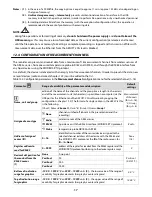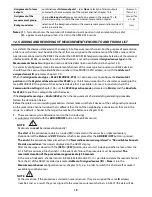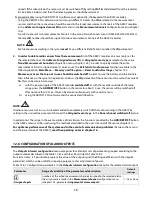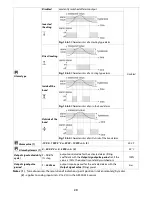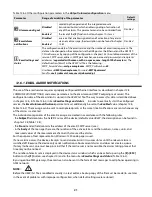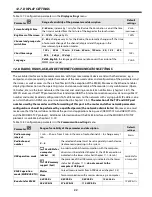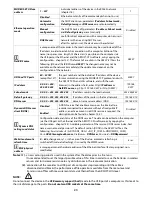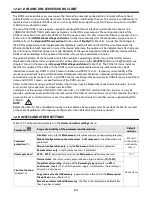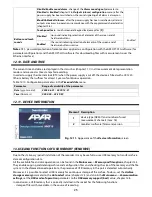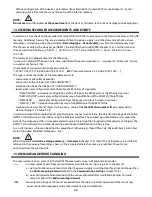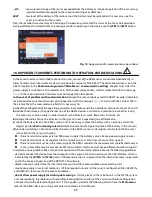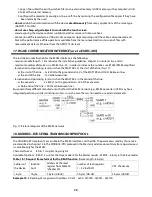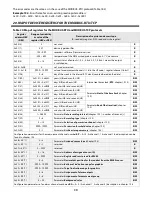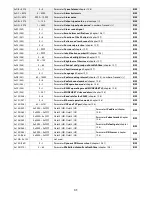
26
!
!
- off-line configuration of the device's parameters (from files
AR407.cfg
and
AR407.txt
, see chapter 12, item 3)
- copying archive files with the
csv
extension from the internal memory
NOTE:
Do not use
two USB sockets
at the same time
from the front as this leads to the risk of damage to the equipment.
14. VIEWING RECORDED MEASUREMENTS AND EVENTS
In order to archive the data, the recorder creates text files with the
csv
extension in the internal memory or the USB
memory. Additional, new
csv
files are created each time the power supply is switched on and each time a new
recording is started (e.g. when the parameter
Recording type
=
Periodic daily
, new files are created every day).
The file name contains the device type (AR407), the identification number (
ID
) (chapter 12.3), and the date and
time of creation of the file, e.g. “AR407_1_2016-10-09_10-57-16.csv” (AR407, ID = 1, date = 2016-10-09, time =
10:57:16).
The format of a single data record is the following:
"successive number of the event; date; time; identifier of the event; argument1; ...; argument n; check sum", where
n=number of channels (16).
An example of a record containing measurements:
“1;2016-10-09;10:57:16;5;49,5;26,2;19,80;1020;…;8BE2” (measured values: “49,5;26,2;19,80;1020;…”).
The types and the identifiers of the recorded events are:
- measurement (identifier of event
5
)
- connection to the USB port (
0
, “USB;CONNECTED”)
- disconnection from the USB port (
1
, “USB;DISCONNEC”)
- loading of a new configuration (identifier of event
3
), values of arguments:
- “NEW;ON-LINE” - parameter configuration via the USB port, the RS485 port, or the Ethernet (on-line)
- “NEW;OFF-LINE” - parameter configuration by way of modification of the
AR407.cfg
file (off-line)
- “NEW;USER” - parameter configuration from the keypad and touch screen (user) level
- “NEW;CH_TEXT” - name configuration by way of modification of the
AR407.txt
file
- creation of a new
csv
file (
4
, “ID;xxxx”, where xxxx - value of the
Identification number ID
parameter of the
device, chapter 12.3, Table 12.3)
In order to present the recorded results graphically or as text or to print them, the data must be imported into the
ARSOFT-LOG software via the USB or using the Ethernet interface. The quickest possible method is to import the
data via the computer's USB; it is recommended in case of very large files (hundreds of megabytes and larger). The
ARSOFT-LOG software also enables detecting unauthorized modifications of the archive.
As an alternative,
csv
files can be edited in spreadsheet software (e.g. OpenOffice Calc, Microsoft Excel) and in text
editors (Windows WordPad, +, etc.).
NOTE:
When the parameter
Archive storage memory
=
Auto select
(chapter 12.3) then if the USB memory is installed or
removed in the course of recording, a new
csv
file is created where the successive numbers of events are
continued from the previous file.
15. MESSAGE AND ERROR SIGNALING
The measurement errors present in the field of the measured values in all presentation modes:
------
- no measurement data from sensors/devices, possible causes (tips are given in chapter 16):
a)
waiting for the measurement data after the power supply is switched on (for a time not longer than
the
Radio scanning interval
defined in the
Communication settings
, chapter 12.8),
b)
no or disturbed communication with the sensor (indicated after two failed attempts, for radio
sensors made with a
Radio scanning interval
)
--HI--
- measurement range of the sensor exceeded from the top or incorrect operation of the sensor (e.g.
signal connected improperly to the measurement input or defective)
Summary of Contents for AR407
Page 32: ...32 21 USER S NOTES...






